-
Posts
7,405 -
Joined
-
Last visited
-
Days Won
148
Content Type
Profiles
Forums
Resource Library
Events
Gallery
Blogs
Store
Community Map
Posts posted by Noel
-
-
Top class realism Rob. You've really captured the atmosphere of Heuston. Very enjoyable to watch.
-
 1
1
-
-
Superb on every level. Love this layout.
-
20 minutes ago, murphaph said:
Did any Park Royals make it to 1994 with a single 6" stripe like some of the Cravens did?
Yes. 1984 photo (C) Steve Rabone. As I remembered the Park Royals, I never saw them in Tippex myself.
https://www.steverabone.com/RailwayPhotographs/ireland_1984.htm
Have four of these with Kadee couplings. They will be joined by IRM versions. Two of these, two craven, two laminates and a HLV or GSV and you have an Irish passenger train from the 1960s through to the 1980s. Always mixed rakes of 'all kinds of everything'. Delighted to hear the IRM versions will be lit and have an anti-flicker capacitor. My personal nostalgia memory is main line versions with the big white WC window. Great news this era will be covered and some company for the early livery A classes too.
-
 3
3
-
-
35 minutes ago, DERAILED said:
Got to love the accuracy - less than three minutes in and DART is mentioned as Dublin Area Rapid Transport and then the reporter buys a ticket to Pearse Street. Gotta love the standard of journalism on RTE - nearly as good as the company that they are reporting on.

Yea potatoe patayto transit transport.

 Many journo's and researchers seem to only spend 90 seconds on google to research anything instead of speaking with qualified sources. Wiki is taken as gospel truth.
Many journo's and researchers seem to only spend 90 seconds on google to research anything instead of speaking with qualified sources. Wiki is taken as gospel truth.
-
20 hours ago, Warbonnet said:
Commodious. Comfortable. Quirky and quintessentially Irish, the Park Royal coaches represent the maximum use of our generous loading gauge and an iconic piece of Irish coaching stock. It was about time it was represented faithfully in OO/4mm.
A project that has been in-hand for a while now, we're delighted to bring you the news of the IRM CIE Park Royal coaches, representing these icons from the 1950s which served CIE and later Irish Rail well into the 1990s.
Check out our extensive history of these unique coaches over a tipple below...
HISTORY
On July 1, 1948 the Irish Government asked Sir James Milne, last General Manager of the United Kingdom’s Great Western Railway, to investigate the state of internal transport in Ireland and his report, published later that year, suggested that diesel traction alone would not be the answer to Córas Iompair Éireann’s problems. Deemed inadequate to meet the needs of the population, Milne’s report highlighted that the average age of CIÉ’s coaching stock was 47 years old, with 155 vehicles being over 60 years old and that a large proportion of the vehicles had not had a general repair for over 10 years, with some not being overhauled since 1929.
Milne noted that, as at January 1, 1948, coaching stock (exclusive of the Drumm Battery trains), amounted to 1325 vehicles and of these, 1251 were broad gauge, with 369 bogie passenger carriages and 394 non-bogie passenger carriages, while other coaching vehicles amounted to 29 bogie vehicles and 459 non-bogie vehicles. Six-wheel stock was prevalent and of the 763 passenger vehicles, 155 still had no heating, and two even had no form of artificial lighting. There were only 34 coaches of what could be considered as modern design and all these vehicles were at least 11 years old.
Something needed to change.
On January 1, 1950, Córas Iompair Éireann was nationalised and within a couple of years the board of CIÉ had approved a capital expenditure programme of almost £1 million on new coaching stock under the direction of Oliver Bulleid. In September 1949 Bulleid had retired from his role as Chief Mechanical Engineer of British Railways Southern Region and was well placed to assist with the CIÉ’s move towards modernisation, having been one of three further technical assessors to Sir James Milne during his reporting phase. Bullied became a consulting mechanical engineer to CIÉ at the invitation of T. C. Courtney, the new chairman of CIE, and succeeded to the post of Chief Mechanical Engineer in February 1950, becoming the architect of the major construction programme that saw almost 500 new coaching stock vehicles entering service over the following 14 year period.
The bulk of these new vehicles were constructed of a steel-clad, wooden framed body, mounted on a steel underframe, but there were notable exceptions to this method of construction; the first of these being two sets of coaches that were supplied by Park Royal during 1955 and 1956, in which the timber framing of the body was replaced by a metal frame, and was mounted on an all-welded triangulated 61’ 6” underframe, running on Commonwealth bogies. These underframes were made in the United Kingdom, by the Wolverhampton firm of John Thompson Pressings Ltd.
Supplied in component form, the use of prefabricated components supplied by Park Royal allowed for volume construction using a semi-skilled workforce and a single bodyshell type was used for both suburban and main line use, to diagrams 176 and 177 respectively, but with different interior layouts. The body was built integral with the frame and bus pillars (unsurprisingly, given Park Royals coach building credentials) gave support, with the roof being carried on closely spaced hoopsticks, three to a bay. The bodyside was only as thick as it needed to be to carry the window frames and was sealed inside, before plywood lining panels were fitted direct to the frames. Lateral support came from two channel sectioned, externally fitted waist rails on each side, giving the Park Royals their distinctive external appearance.
The coaches made full use of the Irish loading gauge, being 61’ 6” inches long and 10’ 2” wide, this width reducing by 8” at each end, necessary to maintain gauging on curves. Due to their aluminium and steel construction, they only weighed 26 tons tare for the D176 suburban and 27¼ tons tare for the D177 main line type. Initially, two seating layouts were offered; the D176 suburban seating 82 passengers in a 2+3 arrangement, with 6 seats in each vestibule area, and the D177 main line seating 70 passengers in a similar 2+3 arrangement, but with toilet facilities at each vestibule end.
Initially both diagrams were supplied with inward opening ‘bus’ type doors, however these proved unpopular and confusing to the passengers and so the coaches were fitted with conventional outside opening doors as they next passed through Inchicore, the door window position being lowered in the process. This work was carried out by 1958 and there were no more changes to the coaches until the Train Lighting conversions during 1972, the Park Royal’s lighting initially being generated on-board via dynamo and battery.
There were, eventually, several variants in service, with two main conversions giving rise to ‘Snack Cars’, and then Brake Standards. Six main line vehicles were converted to ‘Snack Cars’ in 1968, with one vestibule end incorporating a small counter and serving area and the seating reduced to 56, before being either reconverted to main line standards or Brake Standards in 1984. In all, eight vehicles were converted to Brake Standards at this time, being drawn from Snack Car, suburban and Ambulance vehicles; the latter conversions being the creation of two Ambulance vehicles from existing suburban coaches, to convey invalided pilgrims to Knock Shrine in County Mayo. Two suburban vehicles also found use on the Waterford & Tramore Railway, one having bus seating installed to act as a 93 seat trailer, the other (No. 1408), being converted for use as a Driving Vehicle Trailer on the branch until 1960.
During the 1980s, appearances began to change, and the distinction between suburban and main line versions became blurred in some instances. Many of the coaches lost the circular window at the vestibule ends, with the remaining windows sometimes being reduced in size. On other vehicles, the water pipes on toilet equipped coaches were sometimes arranged in different configurations as pipes were renewed, and passenger communication gear was adapted, or removed entirely from the vehicle ends.
The Park Royal coaches continued in service until the early-1990s, before being barred from certain routes due to their construction, with the last few Park Royal carriages being withdrawn following the delivery of the first Japanese 2600 Class DMUs in 1994. During their period in traffic, Bulleid’s coaches carried a full gamut of liveries; the 40 D176 suburbans carrying the lighter standard overall mid-green livery, with the thinner eau-de-nil stripe carried below the windows, on the waist channelling. Vehicle ends were observed as being the same colour but were prone to extreme discolouration by weathering, and so it is difficult to ascertain whether, in the later years of mid-green application, the body ends were green, repainted black, or just merely filthy.
The ten D177 mainline vehicles initially appeared in unpainted Aluminium, with red class designations and running numbers between 1955 and 1958, before this impractical arrangement was covered with the application of mid-green, with lined Eau-de-Nil class designations. In 1962 the mid-green scheme was replaced with black upper panels, roof and body ends, and deep orange (or golden brown/tan) lower panels with a 6” white band between the windows and the roof. In 1987, under Iarnród Éireann, the 6” band was dropped and replaced with two 3” white bands, either side of the black panel, although it was possible that some Park Royals carried a single white band, reduced to 3”.
The Model
This first run of Park Royal coaches concentrates on the D.176 suburban variants throughout their service life, but also includes a couple of ex-D.177 Snack Car vehicles. We will, in time, also add the D.177 mainline versions to the range, along with BSO conversions and the two Knock Ambulance cars; AM14 and AM15.
With an unrivalled specification list such as a wealth of separately applied parts, both plastic and etched metal, with also fully detailed Irish commonwealth bogies for the first time in ready-to-run format, detail variations, wire handrails, bespoke detailed interiors depending on coach type, full interior lighting with stay alive powerpack for flicker free lighting and a die cast underframe to ensure smooth running, they offer unbeatable value at just €69.99 per coach, with our usual 10% off when you buy two coaches or more!

We are delighted to time the announcement of these beautiful coaches with the Wexford Model Railway Show this weekend, where we will have a 3D print of the final CAD on view.
In the meantime, you can place your pre-order with no money down now via our website for a delivery date of Q2 2024. Expect to see a fully finished sample over the summer too!
Pre-order here below:
PRE-ORDER YOUR PARK ROYAL COACHES HERE
(Despite their widespread service, and longevity of service, good clear photographs of individual Park Royal coaches are rare, and so Irish Railway Models are grateful for the photographic contributions from the Irish Rail Record Society, Jonathan Allen, Colin ‘Ernie’ Brack, Neil Smith and Noel Dodd. Thanks must also go to John Beaumont for his valuable knowledge on livery issues, as well as Peter Rigney, but the final mention must go to Robert Gardiner and the volunteers at the Downpatrick and County Down Railway, who accommodated us on several survey visits.)
Key Statistics
- Highly-detailed 00 gauge model, 1:76.2 scale on 16.5mm track
- Scale length of 246mm over body, width of 40.67mm across body
- Operation over a minimum radius of 438mm (2nd radius set-track)
- Die-cast metal chassis with plastic body.
- Accurate CIÉ Commonwealth bogies, with separate detailing where appropriate, that allows for the option of re-gauging to Irish Broad Gauge (21mm).
- Brake blocks aligned with wheels, allowing for the option of moving outwards for Irish Broad Gauge.
- 12mm wheels are blackened RP25-110 profile for 00 gauge, set on 2mm axles, 28mm over pin-points and with 14.4mm back-to-back measurement.
- NEM standard coupling sockets, with mini-tension lock couplers with a kinematic close-coupling system.
- Scale width wire handrails, water pipes, passenger communication gear.
- Headstock pipes and cabling included in accessory polybag for customer fitting, along with Kosan Gas Tank for the Snack Car.
- Fully detailed die-cast underframe with vacuum cylinders, battery boxes, dynamo and piping applied separately.
- Accurate interior layouts, with detailed seating and decorated where appropriate.
- Full guard’s compartment and kitchen/snack bar area detailing where appropriate, including use of etched metal detailing.
- Prism free flush glazing.
- Interior coach lighting with stay-alive capacitor, pick up from both bogies and a reed switch to control on/off via magnetic wand.
- Separate roof vent types, set in correct locations.

-
On 28/4/2023 at 3:33 PM, BosKonay said:
Samples of the new announcement will be on show at the Wexford show for those who are around

As well as a 3D tool-print of the ICR
Park royals
 yehaw!
yehaw!
-
 1
1
-
-
10 hours ago, murphaph said:
Good job Noel! Looks great. I see IRM have set up camp next to the emergency exit in case they are run out of there with pitchforks for not announcing the "right" new tooling lol.
No the announcement about the Park Royal was well received and a welcome addition, at last some coaches for the silver, black, green and B&T livery A class to haul. The 3D sample looked great.
-
 3
3
-
-
Honoured to be exhibiting Gort at Wexford Model Railway exhibition over the weekend. Arrived at 6:30, superb organisation at the venue. Unloaded and setup in one hour thanks to help from my glamourous soul mate and the organisers. Excellent venue. Looking forward to the next few days.left the signals in the car. Will put them up tomorrow.
-
 10
10
-
 2
2
-
-
Measure twice cut once was the best bit of advice I ever got. Best wishes on what sounds like a fascinating project. Enjoy it and don't rush it.
-
 3
3
-
-
-
27 minutes ago, BosKonay said:
Frankly, without accurascale, IRM would be a one release a year part time effort.
Yea understood that. Hope the growing business doesn't consume so much of your head space that you don't get to enjoy the hobby personally yourself as much you did in the past. Hope you are really enjoying this remarkable odyssey. Doing business in brexitistan must be challenging at times. US market beckons

-
 2
2
-
-
2 hours ago, BosKonay said:
Samples of the new announcement will be on show at the Wexford show for those who are around

As well as a 3D tool-print of the ICR

-
1 hour ago, BosKonay said:
There was an announcement today at 11

Paddy’s new 141’s are expected shortly. The irish market can barely support the two of us let alone duplication

The stock will fly off the shelves, one generates demand for the other.
The A classes perhaps need suitable coach stock to haul, the supply of MM locos is long exhausted and folks are wising up not to pay big money on ebay anymore. The Lima 201 ebay horror story is still in memories. The Baby GMs are ideal for today's layout sizes in folks homes, and on larger layouts can be double headed as they mostly ran in pairs.
When I returned to this hobby 9 years ago I would not have dreamed the abundance of Irish rolling stock that would and now has become available thanks to MM, MIR, IFM, PW, SF and now IRM taking on the baton with an ever increasing range. Hopefully AS won't absorb all the creative juices and energy. The A class was a massive major milestone, the 22k the next. Where will it all end Ted? We have never had it so good, only slight cloud for Irish modellers is the loss of cost effective access to GB suppliers thanks to brexit. Its no longer cost effective to order some parts from the likes of Peters Spares, and Eileen's emporium is closed anyway. Finding German substitute suppliers takes time and they are geared up more to support the higher spec European products who have been decades ahead of Bachmann and Hornby. It's astonishing that a relatively new Irish Company has taken the GB market by storm, raising the bar and having sales success. Superior German/Swiss levels of model engineering but at GB prices.
-
 7
7
-
-
12 minutes ago, BosKonay said:
As Fran said, it's a little appetiser today, and the main course, new tooled something on Sunday at Wexford

 Yee of little patience
Yee of little patience 
Thank you. Will look forward to that. Now a newly tooled GM 141 with stay-alive, a speaker, decoder hatch, proper light arrangements, see through grills and working windscreen wipers and I'll fall of my perch!!!!
 Or, Park Royals with lighting, flush corridor connectors and opening doors. Or the holy grail!
Or, Park Royals with lighting, flush corridor connectors and opening doors. Or the holy grail!
-
How to fix Kadee no 18 couplings on an IRM Cement wagon. Same method applies to the Ballast, Gypsom, and magnesite wagons.
Glue No 18 kadee to the underside of the NEM pockets.
- Gently sand or file the underside of the NEM pockets (ie to get good glue bond later). On one you will need to file away the IRM logo which is in relief to make the surface flat enough to get a super glue bond.
- Gently file the tongs of the Kadee coupling (ie to rough surface for better bond).
- Superglue the Tongs of the Kadee coupling to the underside of the NEM pockets and leave for 10-20mins before use to allow bond to cure hard.
- Ensure the flat inside of the knuckle coupling is level with the external edges of the buffers.
Gluing the Kadee's to the underside of the NEM pocket ensures perfect and correct height of the coupling as per kadee height guage and all other IRM wagons. The wagons can then be automatically uncoupled using kadee uncoupling magnets and interoperate with other wagons and stock (eg IRM 40ft, MIR Cement Pallet wagons, MIR Cement Curtain wagons, Bachmann H-Vans, Dapol H-Vans, etc). Another benefit is the wagons are coupled closer together. Be careful handling these gorgeous wagons, they are very fragile as there are so many details parts fitted to the underside.

-
 1
1
-
 1
1
-
Apologies but a little disappointed - a bus. No choo-choos?
 Still holding out hope for a park royal or laminate to IRM's stratospheric standards.
Still holding out hope for a park royal or laminate to IRM's stratospheric standards.
-
 1
1
-
 2
2
-
 1
1
-
 1
1
-
-
Goods yard. Supplies ready for loading onto wagons ready for the 18:35 passing pick up goods train to Ennis. There'll be one wagon of cattle loaded here also.

Yard crane handy for loading the larger boxes into the corrugated open wagons.

-
 7
7
-
-
Some CIE era trains on the move. How on earth will I get enough poetic license to run 22k along side these?
 May need a Tardis.
May need a Tardis.
-
 6
6
-
 1
1
-
-
I must have been lucky with Hattons this past 18 months. No Delay's no glitches, no additional duty nor vat to be paid. Their DDP (ie Delivery Duty Paid) seemed to work like clock work. Because of DDP Hattons is the only UK retailer I still use. Everything else has been direct with German online retailers in the Eurozone so no hasssle.
-
 1
1
-
-
18 hours ago, jhb171achill said:
That country side is so evocative and so like Co Galway the wonderful goods train above from Du”Gort” harbour could be on route to pass through Gort ending up in Claremorris.
-
 2
2
-
-
2 hours ago, jhb171achill said:
Drool, I nearly fell off my perch looking at those wonderfully crafted scenes. Stunning in the extreme, atmosphere, reality and nostalgia for the pinnacle of a bygone era.
-
 2
2
-
 2
2
-
 1
1
-
-
Got two items lightly weathered this evening for use on Gort
SilverFox Tin Van - Not quite as grubby as JHB might like, but enough perhaps to get the idea.

Irish Freight Models - CIE Laminate Coach. This is grubber than they would have ever looked. Back in the day CIE kept the black and tan coaches pretty clean, unlike IR in the 1990s who let the mk2 and mk3 stock go to pot as well as the few remaining B&T coaches.

Ready for Wexford, well ready enough.
-
 8
8
-
-
-
18 minutes ago, jhb171achill said:
Question for the learned:
I'm getting to the stage of putting grass and bushes etc on my layout. I see that grass applicators are some €80-ish or more, and then i'd need one of those mini-hoover-like things to scoop up stray fibres.
Does anyone have one I can borrow, or buy 2nd-hand; or if I bought one is there anyone out there who might then buy it 2nd-hand from me?
I am reluctant to buy a thing like this which will only really be used once!
I bought a Chinese static grass applicator a few years ago on eBay for €24. Worked as well as the Noch for 1/5th of the cost. Btw Dugort harbour scenery is stunningly Irish and realistic
-
 1
1
-
 1
1
-
.png.c363cdf5c3fb7955cd92a55eb6dbbae0.png)


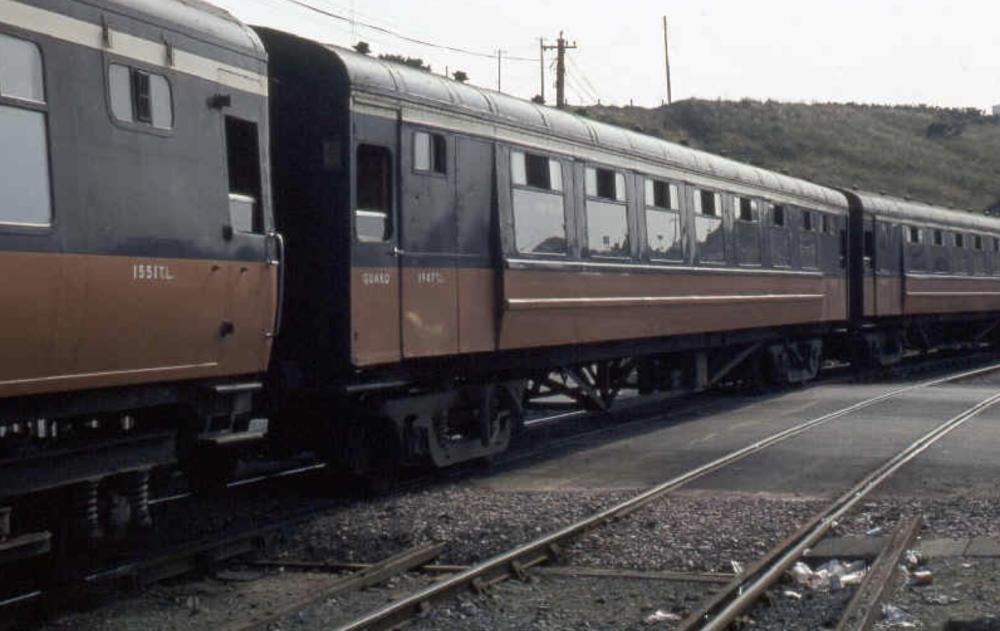









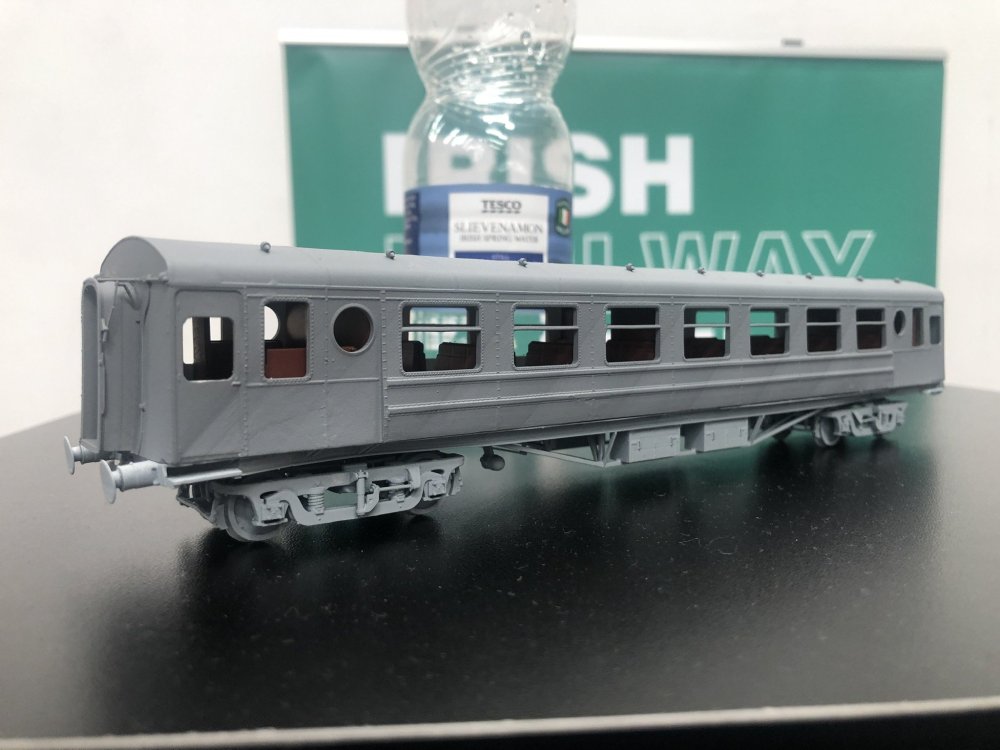
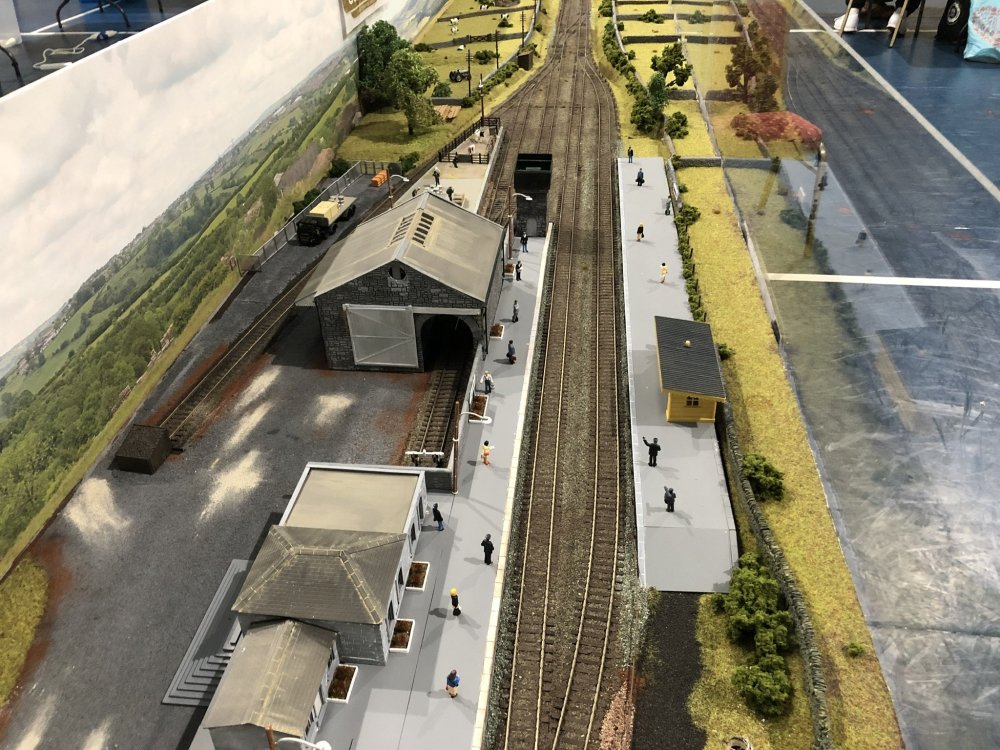
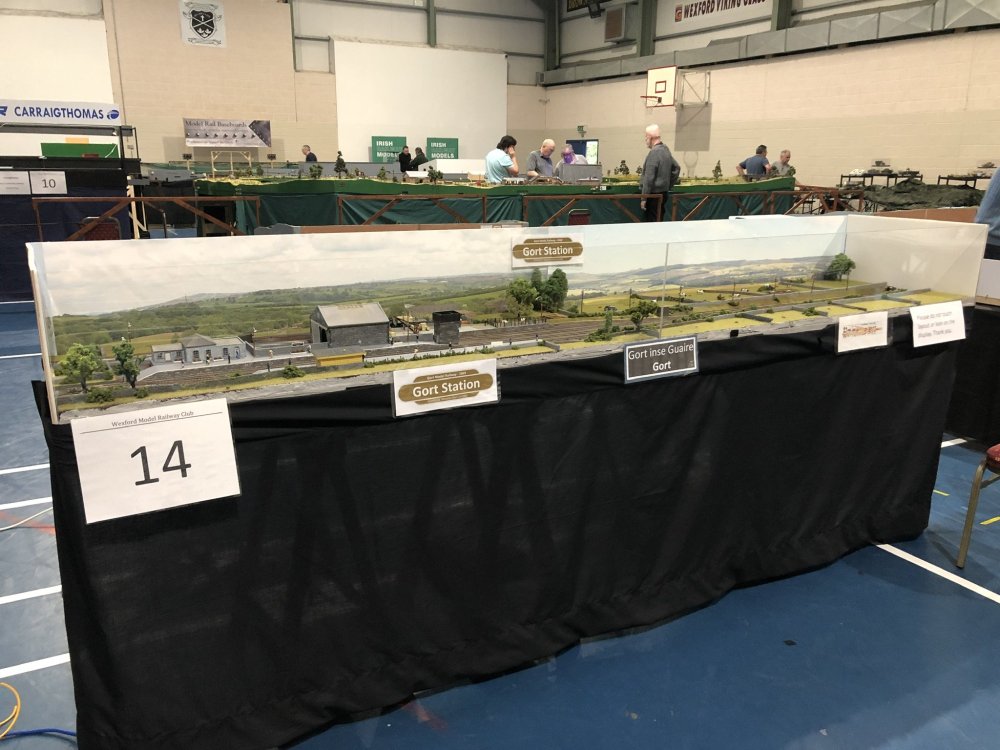
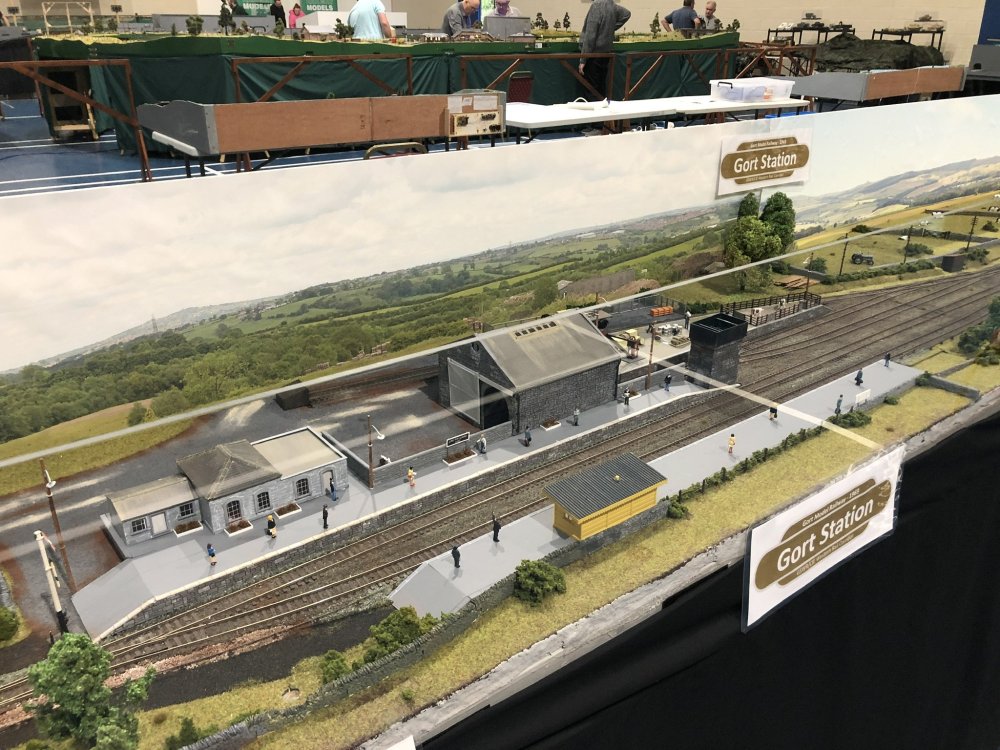

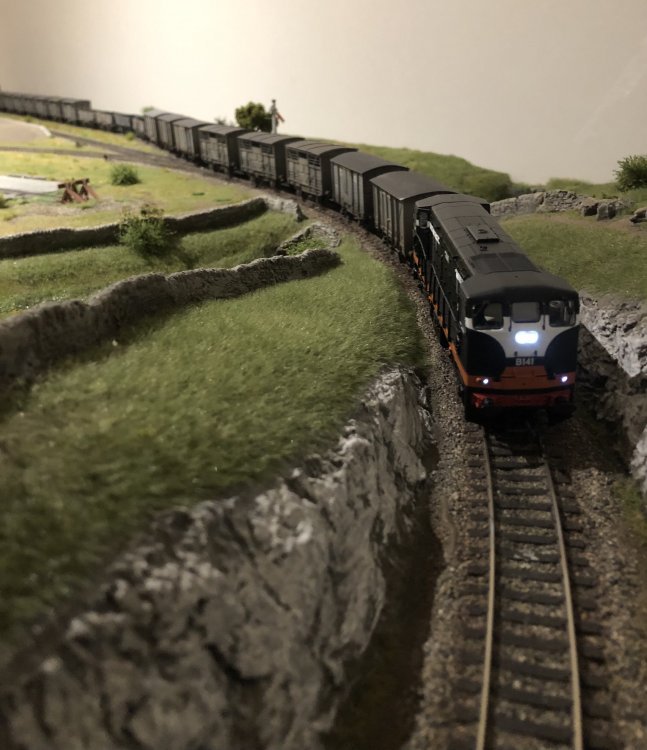
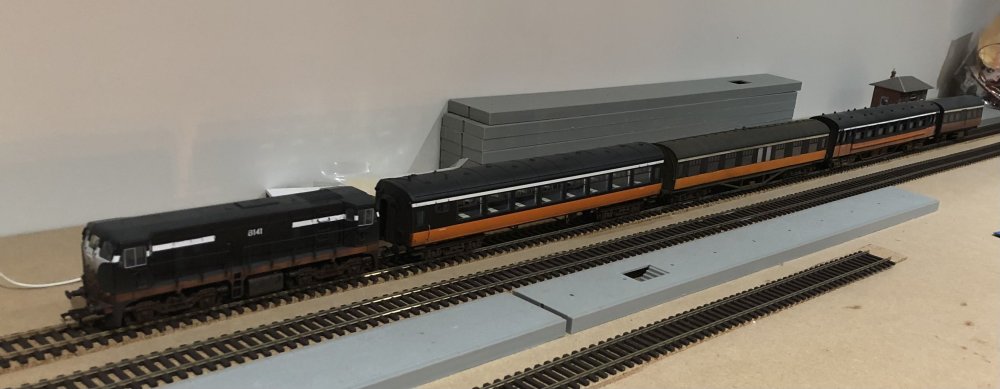

Dugort Harbour
in Irish Model Layouts
Posted
Brilliant Jonathan. Were you at Wexford by any chance?